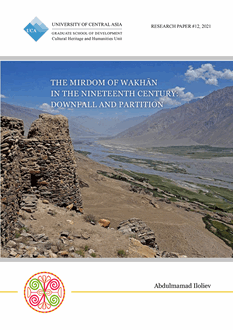The Mirdom of Wakhan in the Nineteenth Century: Downfall and Partition
Abstract
The late nineteenth century was probably one of the most dramatic periods in the history of the small mountainous kingdoms of the Pamirs and the Hindu-Kush. Caught in the crossfires of the Anglo-Russian colonial rivalry in Central Asia, they struggled to survive among their old (the Badakhshī mīrs) and newly emerging masters (i.e. the Afghans, the Manghits of Bukhara, the Chinese Qing dynasty); for each of these masters individually tried to seize the moment to claim their so-called “historical rights” over Pamir. Examining the geopolitics of Wakhān in the last two decades of the nineteenth century, this paper advances a broader argument concerning the role and significance of the local powers in shaping the modern political landscape of the region. The later Wakhī rulers, especially Raḥīm Bek (d. 1838), Fatḥ ʿAlī Shāh (d. 1875) and Alī Mardān Shāh (d. 1926) were instrumental in this endeavour by trying to save their mirgdom, which was already on the eve of collapse and colonialization. Its downfall and later division into Afghan and Bukhara domains, was followed by a dark era of ethnic and religious persecutions, displacement of hundreds of Wakhī families, and the emergence of new migrant communities in China (Xinjiang Province) and British India (Northern Areas of modern Pakistan).




